Matador Network's Blog, page 482
May 5, 2022
These Inspiring Airbnbs Are the Perfect Basecamp for Remote Work

If the past few years taught us anything, it’s that we can work hard anywhere and hybrid working is here to stay. Airbnb – already ahead of the game by permitting remote work to the entire workforce – provides faultless lodging for remote workers and digital nomads.
A recent survey revealed that “Living Anywhere” is on the rise, particularly among US Black and Hispanic communities. 72 percent of Black professionals and 70 percent of Hispanic professionals have experimented by living in multiple locations since 2020. 76% of all survey respondents intend to follow suit.
Destinations with diverse communities that offer a blend of cultural attractions and tropical scenery came out tops for those surveyed. With summer around the corner, these top-rated Airbnbs for remote workers and digital nomads are perfect for your own workation.
We hope you love the remote work Airbnbs we recommend! Just so you know, Matador may collect a small commission from the links on this page if you decide to book a stay. Listed prices are accurate as of the time of publication.
Oceanfront Cave House – Santorini, Greece
Photo: Airbnb

Photo: Airbnb

Photo: Airbnb

Photo: Airbnb
Carved into the picturesque cliffs, this Santorini cave house Airbnb with a private hot tub provides caldera and ocean views from the terrace. The unit is located steps away from the restaurants, museums, and sunset lookouts of Oia. When you’re not working, your host will be delighted to organize boat tours, scuba excursions, and wine tastings at island vineyards.
Three guests, one bedroom
Price: $260 per night

Photo: Airbnb

Photo: Airbnb

Photo: Airbnb

Photo: Airbnb
Embrace island time in the Bahamas. This beautiful studio with a kitchenette overlooks the villa garden and affords a peek at the sea on the quieter side of New Providence. Besides the shared swimming pool, you’ll have access to a private beach. Choose to work in the rocker on the balcony or nab a poolside spot under the palms.
Three guests, one bedroom
Price: $210 per night
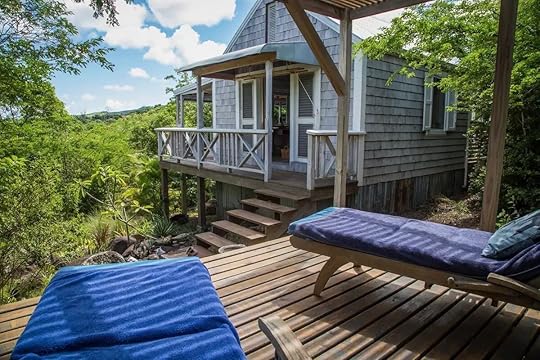
Photo: Airbnb
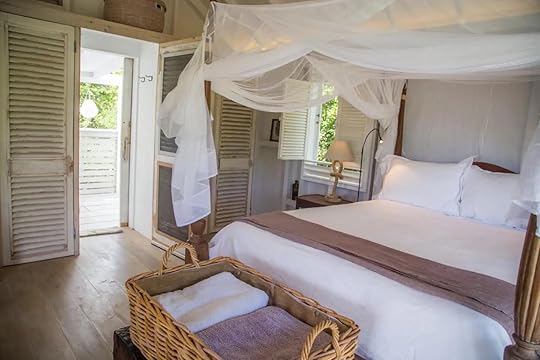
Photo: Airbnb
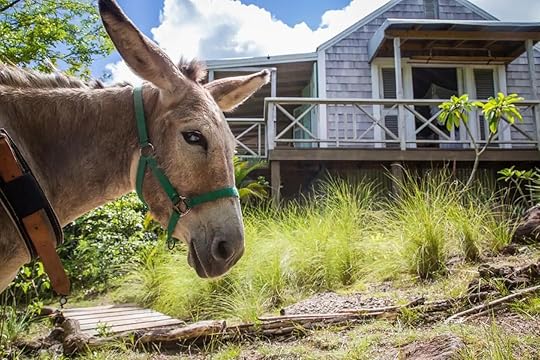
Photo: Airbnb
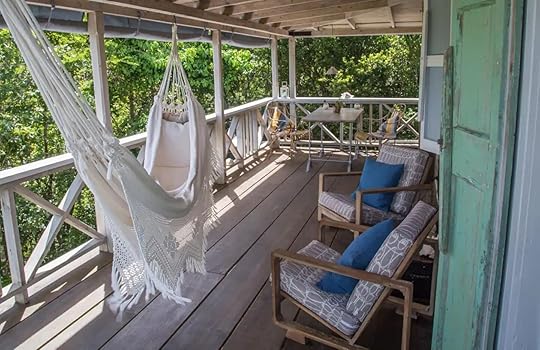
Photo: Airbnb
“Logwood” was fashioned using as many recycled materials as possible while the exterior is covered in wooden shingles as per the traditional Caribbean style. The cabin is beautifully curated with a four-poster bed, an outdoor bathroom, and a deck with a hammock. Buried in the midst of the jungle – your only neighbors have feathers and four paws – this is off-grid living at its best. Yet, this digital nomad-friendly Airbnb benefits from slick Wi-Fi.
Two guests, one bedroom
Price: $130 per night

Photo: Airbnb

Photo: Airbnb

Photo: Airbnb

Photo: Airbnb
This luxury designer villa features four en suite bedrooms, a pool, and a rooftop patio with sea views. Interiors are punctuated by wooden sculptures and midcentury furnishings while glass walls enable you to feel even closer to the tropical foliage. Add-ons provided by the Villa Manager include private chef, fresh groceries, spa services, and childminding.
Eight guests, four bedrooms
Price: $3,050 per night
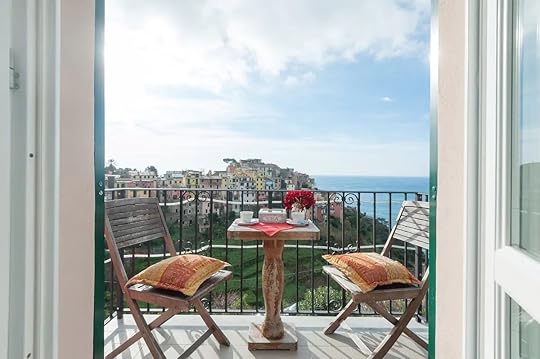
Photo: Airbnb

Photo: Airbnb
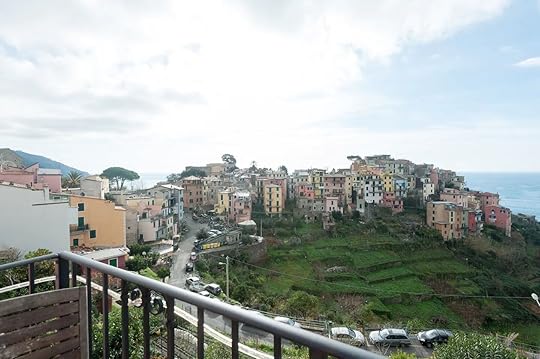
Photo: Airbnb
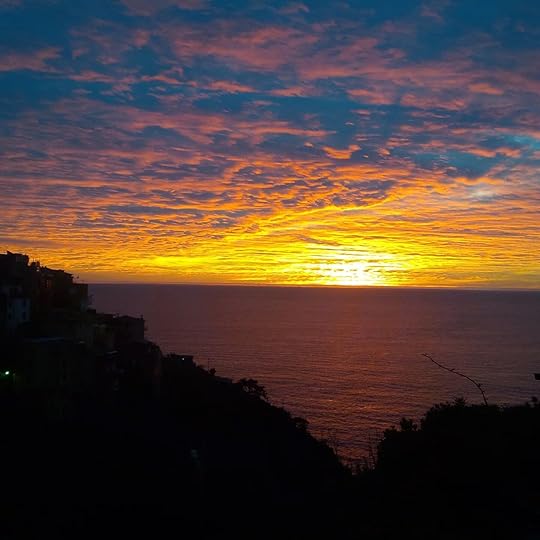
Photo: Airbnb
This pet-friendly Airbnb provides a jaw-dropping view of the Ligurian Sea from the private balcony. A fresh breakfast is available each morning at the host’s cafe. The space is simple yet supremely comfortable and provides a stellar base for exploring the Cinque Terre region. Loosen up after a morning hunched over the laptop with a stroll along one of the local hiking trails.
Two guests, one bedroom
Price: $100 per night
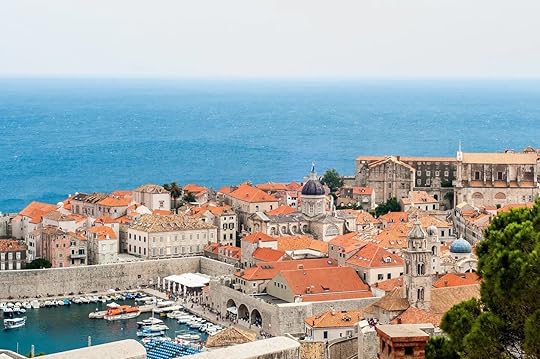
Photo: Airbnb

Photo: Airbnb

Photo: Airbnb
Located on the outskirts of Dubrovnik Old Town, this contemporary Airbnb apartment occupies a lofty position overlooking the Adriatic Sea and the walls. The space is impeccably appointed with a full kitchen, separate bedroom, and a spacious lounge with a sofa bed. Savor views from the terrace while you work through your to-do list or kick back with a book and a glass of local Zinfandel.
Four guests, one bedroom
Price: $100 per night
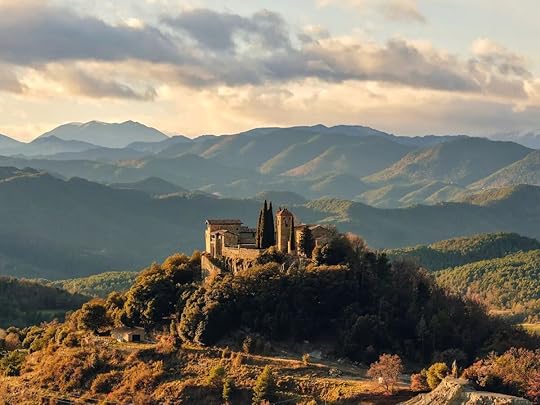
Photo: Airbnb
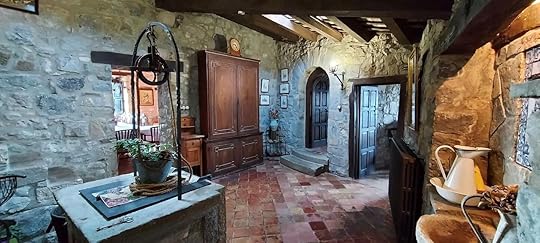
Photo: Airbnb
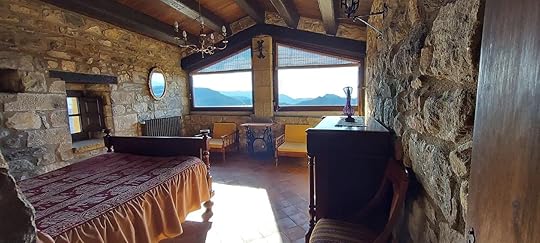
Photo: Airbnb
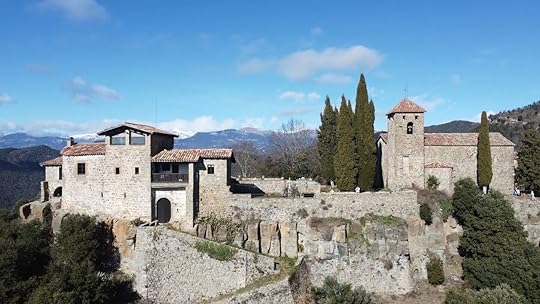
Photo: Airbnb
You read that right – this unique Airbnb castle property could be yours for a night, a week, or even longer! The Castle of Llaés was added to the Ripollès skyline in the 10th century. Although carefully restored to suit modern tastes (yes, there’s Wi-Fi and heating), the interiors retain their ancient charms with exposed stonework and arched doors. Rental includes access to a spacious garden with a barbecue and panoramic views across the valley.
Sixteen guests, eight bedrooms
Price: $510 per night

Photo: Airbnb
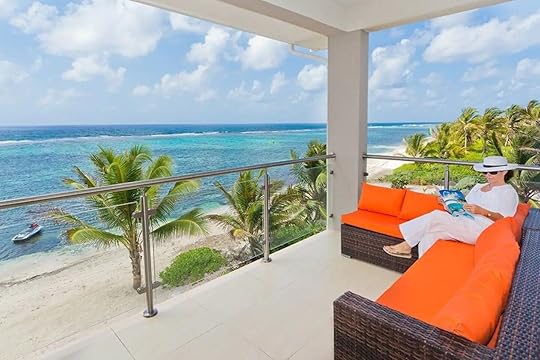
Photo: Airbnb

Photo: Airbnb

Photo: Airbnb
Open your balcony door at this oceanfront Airbnb villa in Grand Cayman and you’ll have an uninterrupted view of the Caribbean Sea. The apartment comes with a full kitchen, a bathroom with a soaking tub, and a private patio. As a guest, you’ll have access to the complex swimming pool while Bodden Town is a short drive down the road from this peaceful beachfront home.
Four guests, one bedroom
Price: $195 per night
The 8 Best Rivers in Washington State for Salmon Fishing
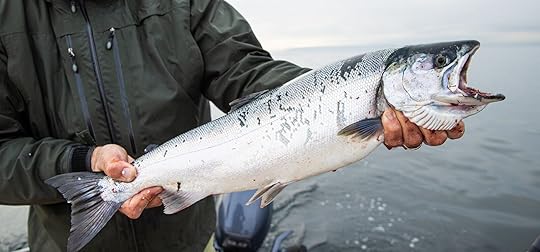
For the indigenous people who live near the massive Columbia River in Washington state, salmon sustained life, formed the basis of trade, and served as one of the most important figures in their spiritual practice. So important is this fish to their way of life that these tribes still collectively call themselves the “Salmon people.”
Today, sport salmon fishing remains one of the most popular outdoors activities in Washington, perhaps because it’s so versatile and open to people of all ages and levels of experience. And Washington tribal communities are still at the forefront of salmon fishing – many of the best rivers for salmon fishing in Washington are on tribal lands and the tribes run hatcheries that have revived once endangered salmon species.
You can go salmon fishing from the beach, charter a guided fishing expedition, fish on the open water (experienced anglers only), or boat down one of Washington’s many pristine rivers for spawning salmon. Bring the kids too – this is a family activity.
Chinook salmon and coho salmon are the most popular salmon among sport fishers, but there are a few rules to follow before you grab your tackle box. Peak season for salmon fishing is typically May through September – though it sometimes extends into December – and anglers do not have free reign once they get on the water.
The salmon fishing rivers and other bodies of water in Washington are split into marine areas that have catch quotas. Once the quota is met in a certain marine area, it shuts down for the season. You can brush up on fishing regulations and get your fishing license through the Washington Department of Fish and Wildlife. Anglers are also encouraged to catch and release wild salmon.
Once you’ve acquired the necessary equipment and brushed the cobwebs off your kids’ life jackets, you just need to decide where you want to go. The rivers of Washington are lush, teeming with life and greenery, and are truly idyllic places to spend your summer – plus they offer a bevy of other activities from white water rafting to camping on the beach.
These are the eight best rivers in Washington for salmon fishing.
Hood Canal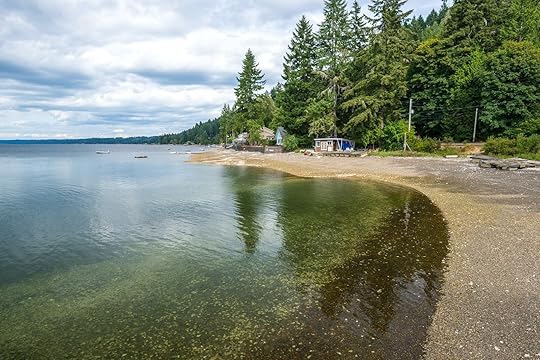
Photo: Checubus/Shutterstock
Head to the Skokomish River in Hood Canal for what some experienced anglers might call an underappreciated region for salmon fishing in Washington. Either a two hour drive or an hour long ferry ride from Seattle, Hood Canal offers bountiful runs of Chinook salmon in July and August. There are 12 official regions in Hood Canal where fishing is allowed. That might make it sound like there is plenty of open space, but the Skokomish River tends to get crowded during salmon fishing season. Belfair State Park is one of the most popular places for fly fishing for coho salmon.
Nisqually River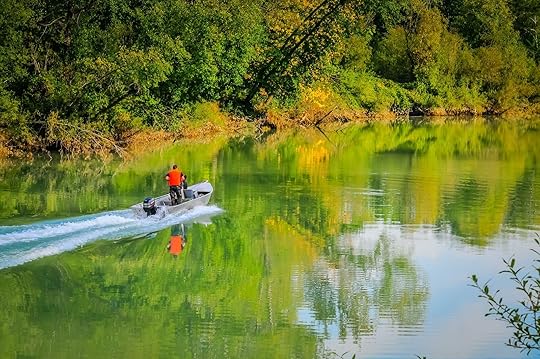
Photo: Art Boardman/Shutterstock
Situated between Tacoma and Olympia and about an hour away from Seattle, some experts think the Nisqually River is the best place for beginners to sharpen their salmon fishing skills. The Nisqually Indian Tribe runs a hatchery program that’s responsible for revitalizing the Chinook and coho salmon in this river, and anglers flock to this river in the late summer and early fall to wrestle with the monstrous salmon that run these waters.
Columbia River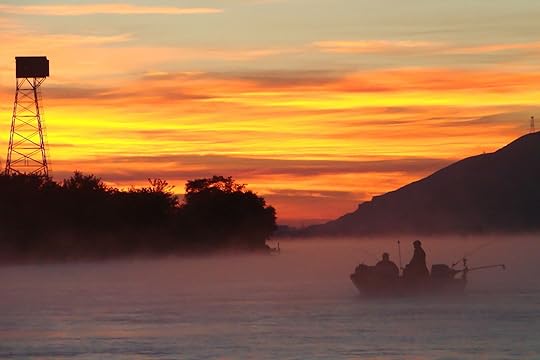
Photo: Tom Reichner/Shutterstock
The massive Columbia River is 1,243 miles long, and extends into parts of Canada and Oregon. For salmon fishing in Washington, several of its tributaries are legendary destinations – in particular the Cowlitz and Kalama. At the Kalama you’ll find Spring Chinook, so the best time to go is in April, May, and June. The Cowlitz, on the other hand, hosts salmon two times a year: Spring Chinook from April to May, and fall salmon return from September to November.
La Push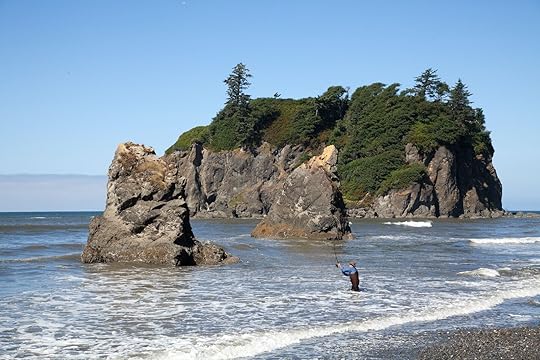
Photo: Anderl/Shutterstock
Spring, summer, and fall Chinook and coho are all accessible from La Push, also known as Marine Area 3. This is open ocean salmon fishing, so it’s only accessible by boat and only experienced anglers gather here. There’s also salmon fishing to be found at the Quillayute River, which opens up into the Pacific Ocean at La Push. Its three main tributaries, The Sol Duc, the Calawah, and the Bogacheil, are busy destinations for salmon anglers (salmon pass through the short six-mile Quillayute before arriving at one of these tributaries where they were born). Here, you’ll find coho and chum salmon, as well as spring and fall Chinook.
Puget Sound
Photo: Kevin Cass/Shutterstock
Offering one of the most abundant coho salmon fisheries in Washington state, Puget Sound is a vast body of water with many options for fishing. For salmon, peak season is from August and September. Experts recommended heading to Central Puget Sound, near Shoreline, Edmonds, and Whidbey Island for the best coho salmon fishing. However, it’s also possible to fish for coho from the beach, and during late summer and early fall, interested anglers can set up a bob and bait at almost any public beach in Puget Sound.
Snohomish River
Photo: cpaulfell/Shutterstock
Just a short 45 minute drive from Seattle, the Snohomish River sees runs of coho, pink, chum, and Chinook salmon. The latest concentration of fish arrives in September and October, and around this time, the busy Snohomish will be dotted with boats looking for their catch. The pink salmon are especially abundant in the Snohomish River but they only return in large numbers during odd numbered years. Experts recommend taking a smaller boat at the lower end of the Snohomish River for the best salmon fishing.
Chehalis River
Photo: Adam Cegledi/Shutterstock
Expert anglers agree that the Chehalis River, near Grays Harbor about a two hour drive from Seattle, is a great salmon fishing location. You’ll find chum, coho, and Chinook salmon here from September to December — later in the season than in other places in Washington. Your best bet is to if you want to catch coho.
Deception Pass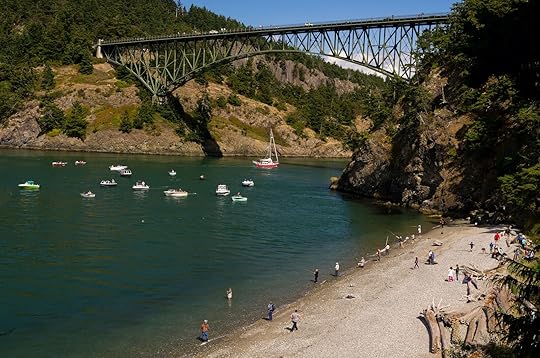
USA, Washington State, Deception Pass State Park. Salmon fishing in Deception Pass. Deception Pass bridge spans strait separating Whidbey Island from Fidalgo Island.
Coho and pink salmon runs arrive in Deception Pass from August through September. Pink salmon also return to Deception Pass (again, during odd years) and can be fished from shore so you don’t necessarily need a boat or even much experience. Technically located in Puget Sound, vacationers gather in Deception Pass State Park every summer to fish salmon from the shore – and take a few fish back to their campsite to grill over an open fire. The best places for salmon fishing at Deception Pass State Park are North Beach and West Beach. 
Sunscreen that won't harm reef

If the amount of sunscreen that ends up in the ocean each year is anything to go on, then it would appear that skin cancer prevention campaigns are paying off. On a global scale we apply enough sunscreen annually for 25,000 tons of it to end up in the ocean says Nicolas Imbert, executive director of Green Cross France. Most sunscreens on the market contain ingredients such as oxybenzone, avobenzone, octisalate, octocrylene, homosalate, and octinoxate. Fortuantely, there are many reef-safe sunscreen options that do not.
Why it’s important to buy reef-safe sunscreenWhile that is good news for our skins, it also means we’re having an enormous environmental impact on ocean life. These ingredients produce chemical reactions that protect the skin from harmful rays, but some of them are also “toxic to the symbiotic algae that live within corals.” A 2008 study revealed that “sunscreens, by promoting viral infection, potentially play an important role in coral bleaching in areas prone to high levels of recreational use by humans.” It was for this very reason that, in May 2018, Hawaii passed a bill to ban the sunscreens that are harmful to these ecosystems.
Luckily, mineral sunscreen is a good alternative to chemical sunscreen. It uses active mineral agents such as zinc oxide and titanium dioxide to reflect the sun’s light away from the skin. Not only are the ingredients in mineral sunscreen safer for humans (oxybenzone, the most common ingredient in chemical sunscreens, has been linked to allergies, hormone disruption, and cell damage, while zinc oxide is the only active sunscreen ingredient approved for use on children by the FDA), but mineral sunscreens are also safer for the environment.
Some nuance is required here, however. Firstly, just because a particular brand of sunscreen says “mineral” on the bottle doesn’t rule out the possibility that it also contains chemical ingredients that are not reef-safe. Second of all, some mineral sunscreens use zinc oxide and titanium dioxide nanoparticles to make them more spreadable and appear less white on the skin, but the mineral ingredients must be “non-nano” in size to be considered reef-safe. If they are below 100 nanometers, the creams can be ingested by corals and transform into hydrogen peroxide when exposed to the sun, generating high levels of stress on marine phytoplankton. What’s more, Hillary Peterson of the Huffington Post points out that “nanoparticles of anatase titanium dioxide break down in the presence of UV and water to generate free radicals. Since some skin cancers are linked to damage done to the skin by free radicals this is cause for concern.”
It would be convenient if choosing a sunscreen were as simple as “chemical equals bad and mineral equals good.” With so much to take into consideration, it can be complicated to make the right choice as a consumer, These are the top reef-safe sunscreens to wear this summer. Each is non-nano zinc oxide.
We hope you love the reef-safe sunscreen we recommend! Just so you know, Matador may collect a small commission from the links on this page if you decide to book a stay. Listed prices are accurate as of the time of publication.
1. All Good — SPF 50+ Water Resistant Zinc Sunscreen Butter
Photo: All Good
$9.99
2. Badger Balm — Sport Sunscreen Cream SPF 35
Photo: Badger Balm
$15.99
4. Beauty by Earth — Body Sunscreen SPF 25
Photo: Beauty by Earth
$16.99
5. Goddess Garden Organics — Daily SPF 30 Mineral Sunscreen
Photo: Goddess Garden
$17.99
6. Raw Elements — FACE + BODY 30+ TUBE
Photo: Raw Elements
$18.99
7. Babo Botanicals — Clear Zinc Sunscreen Lotion SPF 30 Fragrance Free
Photo: Babo Botanicals
$19.95
8. Mad Hippie — Facial SPF
Photo: Mad Hippie
$24.99
11. Living Libations — Everybody Loves the Sunshine with Zinc
Photo: Living Libations
$45
10. White & Elm — Everyday SPF 15
Photo: White & Elm
$28.95
9. Jungle Mama — Sunshield Cream
Photo: Jungle Mama
$24.99
3. Poofy Organics — THE Sunscreen
Photo: Poofy Organics
$16
More like thisTechnology + GearEverything You Need for a Trip To the Beach This SummerAthens, Greece, for LGBTQ travelers

Greece has always been high on the list of LGBTQ+ destinations. It’s one of the most liberal and welcoming countries in Europe for travelers of all colors of the rainbow. Mykonos, Santorini, Paros, and other beautiful islands have attracted crowds who vacation at lavish beach clubs and party at some of the best events on the queer calendar. But it’s not only the islands where you can find a community. Gay Athens is one progressive place with several saunas, restaurants, bars, nightclubs, and other establishments that specifically cater to queer people.
Although the majority of the population of Athens is fairly liberal, they especially extended this welcoming nature in the artistic Gazi district, where the vast majority of the LGBTQ+-owned and -operated businesses are located.
To help plan your queer-friendly travels, we’ve put together a comprehensive list of the major LGBTQ+ institutions and safe spaces in the city. From where to party, where to stay and what to do, here’s your guide to gay Athens.
LGBTQ+ outdoor spaces and neighborhoods in Athens
Photo: cge2010/Shutterstock
Gazi districtIn proximity to the Acropolis sits the latest hub of arts and entertainment — the Gazi district. If you’re looking to go bar-hopping in a queer-friendly safe space, you’ll find it here. As a bonus, the most popular historical sites are just a few stops away on the Athens Metro.
Platia Agias IrinisPlatia Agias Irinis, a square near Monastiraki, has become another popular place in the city to get to know the queer community. The square and its surrounding restaurants and businesses have become a hot spot and a safe place for all.
Gay beaches and saunas in Athens
Photo: Pit Stock/Shutterstock
LimanakiaDrive 30 minutes from the center of Athens and you’ll find Limanakia, one of the most famous gay beaches in all of Greece. During the warm summer months, this nudist santuary, with its rugged shoreline and clear waters, is packed with locals and tourists. Nearby, you can also grab food and drinks at one of the many surrounding LGBTQ+-friendly establishments.
Alexander Sauna Men’s ClubAlthough Athens has several saunas and spas, it’s Alexander Sauna Men’s Club, in the heart of the Gazi district, that tops the list. You can enjoy cocktails in the lush gardens or head to the upper floors to indulge in, shall we say, more private matters — like those that might take place in the expansive foam playroom.
Address: Meg. Alexandrou 134, 104 35
Gay bars, nightclubs, and friendly restaurants in Athens
BEQueer bar, mentioned below. Photo: BEqueer/Facebook
Big barBig has the distinction of being the first bar dedicated to Bears in the city. In the Votanikos area, near the Gazi district, Big, though intended for a specific demographic, is welcoming to all with its cheap mixed drinks and laid-back environment. It is a perfect place to lounge around before going out to one of the many queer nightclubs in the surrounding area.
Address: Falaisias 12, 118 55
TRAPTRAP is another wildly popular institution. During the day, it’s a cafe dishing up simple and delicious plates. At night, TRAP is a lively bar serving up a variety of music to queer locals and international travelers.
Address: Koritsas 15, 104 47
David BarAlso in the Gazi is the nightclub David. It welcomes the most stylish queer and heterosexual crowds in all of late-night Athens. It is also a popular place in the afternoon for cocktails and coffee.
Address: Konstantinoupoleos Ave. 44, 118 54

Sodade2. Photo: Sodade2/Facebook
Sodade2For over 15 years, Sodade2 has welcomed thousands of LGBTQ+ partiers into its hallowed halls. Sodade2 offers an interesting mix of local music, cocktails, and culture that is sure to enchant every wayward traveler. During the weekends, Sodade2 is the place to be.
Address: Triptolemou 10, 118 54
Noiz ClubUnlike many other queer nightclubs and bars in the city, Noiz is not solely dedicated to drawing in gay men. It’s also open every night of the week, welcoming queer people to its stylish decor and international DJ sessions.
Address: Konstantinoupoleos Ave. 78, 104 35
Koukles ClubFrom comedy to top-notch cabaret acts, Koukles in the city’s center offers a full range of theatrics. If you’re looking for an immersive LGBTQ+-focused cabaret experience in Athens, check out the club’s social pages for upcoming events.
Address: Zan Moreas 32, 117 41

Drag night at BEqueer. Photo: BEqueer/Facebook
BEqueerIn the center of Athens, BEqueer, aside from being an incredibly popular queer nightclub, is also becoming a glittery beacon of drag culture in the city. In one night, visitors can experience several Athens-specific queer events — from drag shows to cabaret acts.
Address: Keleou 10, 104 35
MyrovolosAccording to the locals, Myrovolos is a cafe and bar that, over time, has become a popular hangout for lesbians. It’s also great for fast and delicious Greek cuisine.
Address: Giatrakou 12, 104 36
Beaver CooperativaSince Beaver’s inception, the restaurant and bar, owned by an all-female co-op, has maintained a friendly and welcoming presence. It is now a favorite among lesbians and local feminists. Try the famous Greek coffee and enjoy socializing with the local LGBTQ+ and feminist communities.
Address: Vasileiou Tou Megalou 46, 118 54
Where to stay in AthensWe hope you love the Airbnbs we recommend! Just so you know, Matador may collect a small commission from the links on this page if you decide to book a stay.
Design-savvy studio with balcony
Photo: Airbnb

Photo: Airbnb

Photo: Airbnb

Photo: Airbnb
We’d book this Airbnb simply for the charming balcony. Sipping ice-cold ouzo at sunset here would be absolute heaven. The studio has one bedroom and a comfortable pull-out couch. The design aesthetic is elegant and streamlined with a modern fully equipt kitchen. It’s fairly central, with an eight-minute walk to Acropolis Museum and a short three to SygkrouFix metro station.
Penthouse suite with views of the Acropolis and the Parthenon
Photo: Airbnb
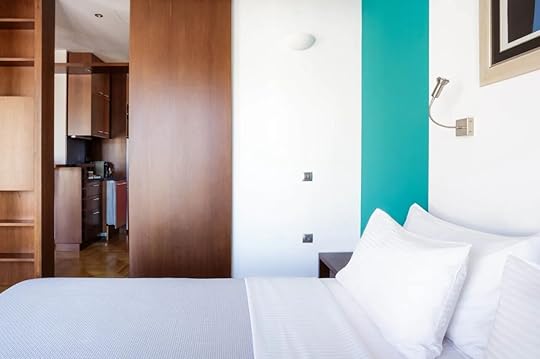
Photo: Airbnb
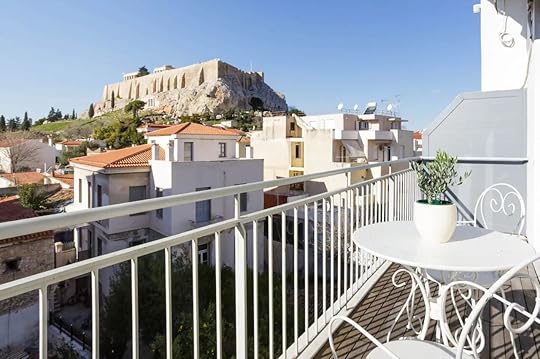
Photo: Airbnb

Photo: Airbnb
And we’d stay here just for the view! The penthouse has a breathtaking outlook over the Acropolis and the Parthenon. In fact, the host states you can see the Acropolis from every room. In picturesque Plaka, the fourth floor suite has one bedroom, one bathroom and sleeps two guests. This Airbnb also has a lovely little balcony, which previous guests rave about.
Fully renovated two-bedroom apartment
Photo: Airbnb

Photo: Airbnb

Photo: Airbnb

Photo: Airbnb
This fashionable two-bedroom apartment features window walls allowing for natural light to flood in from the leafy backyard. It’s within walkable distance of all tourists’ sights, but public transport options are also easily available. The hosts have great reviews with guests noting how helpful and informative they are.
Central apartment with rooftop pool
Photo: Airbnb

Photo: Airbnb

Photo: Airbnb

Photo: Airbnb
We didn’t think we could top the penthouse above, but you can enjoy similar views of Acropolis from the rooftop pool at this Airbnb. The new rental has all modern comforts and even a glass living room ceiling which looks up into the swimming pool above! This is a top-tear Airbnb, so be sure to book in advance.
LGBTQ+ tours of Athens
Photo: Kite_rin/Shutterstock
Alternative Athens’ Gay and Lesbian Athens Nightlife TourIf you’re looking for a tour that specifically covers every popular LGBTQ+ destination in the city, sign up for Alternative Athens’ Gay and Lesbian Athens Nightlife Tour. On this tour, you will have time to visit several queer nightlife institutions — from popular gay bars to fashionable cabaret lounges.
Gaily Tours and ExcursionsAfter your tour of every queer institution, perhaps you’d like to make time to see the historical and cultural monuments that make Athens so popular.
There are several LGBTQ+-friendly companies but we recommend Gaily Tours and Excursions. Three queer tours are available: a historical tour of monuments like the Parthenon and the Acropolis, an informative outing around Gazi, and an exploration of the city at night. 
What to eat in Mississippi

A trip to Mississippi is a promise that you’re going to eat well. Here in the Hospitality State, serving good food to visitors counts as a love language, a way of welcoming all, of sharing stories and connections. Of sharing pride, joy, and a sense of community.
Of course, you’ll find the classic Southern staples you’re hoping for — think fried chicken so crispy on the outside yet impossibly juicy on the inside — but Mississippi also has its own style when it comes to cuisine, with surprising complexity thanks to its multicultural heritage. Before you take a taste, take a look.
THE HISTORY
Photo: Red Confidential/Shutterstock
If America is a melting pot of cultures, Mississippi is its kitchen cabinet. The roots of the state’s cuisine tap into rich veins of African, European, and Native American heritage, among others.
When it comes to soul food, these “roots” certainly aren’t confined to minor historical influences — the culinary traditions of Black communities stand as strong as ever in Mississippi. Okra, just one example, was used by enslaved Africans for everything from coffee (you can roast the seeds) to that night’s meal. Today, you’ll taste it as a side dish, battered and fried; in gumbo, a word that comes from the Bantu word for okra (ki ngombo); or completely reimagined, as local chefs rework classic staples to surprise modern diners.
The Gulf Coast also heavily shaped Mississippi’s cuisine. Nearly 200 years ago, Biloxi was plying locals and visitors with plump shrimp, oysters, crab, you name it. By 1890, the town was processing some two million pounds of oysters a year. Slovenians, Czechs, Cajuns, and then Vietnamese were just a few of the immigrant groups who came to the “Seafood Capital of the World,” and hints of the flavors they brought with them can be found in the spices, herbs, and flavors of the state’s best seafood dishes. Today, you can sample many of them on the Mississippi Seafood Trail, comprising 80+ restaurants from the Delta to the Gulf Coast that specialize in wild-caught, genuine Gulf seafood.
THE EXPERIENCE
Photo: 22Images Studio/Shutterstock
In Mississippi, food is first and foremost a way of bringing people together. Many of the state’s best restaurants are casual family-run affairs — even upscale, fine-dining establishments can make you feel like you’ve arrived at a friend’s house just in time for dinner.
If nothing else, the cuisine your taste buds should get to know is Mississippi’s soul food. These rich flavors, comforting the mind and body, run through the state’s culinary veins. Some of the country’s best biscuits, catfish, fried chicken, and more line small-town counters and big-city tables — almost always served up by folks wielding recipes refined over generations. Similar to the South’s love affair with barbecue, no two Mississippi soul food stops will be the same, even (or especially!) if they’re next-door neighbors.
THE ICONIC DISHES
Photo: Peredniankina/Shutterstock
If you’re crossing the state border for the first time, here’s your 101 on what to look for at Mississippi’s restaurants, diners, cafes, and dives.
CatfishMississippi leads the country in catfish production, so it’s no surprise that you’ll often find this mild white fish on the menu. Catfish becomes moist and flaky when battered and fried, as it’s commonly served here. Besides this freshwater fish, you’ll also want to taste other types of food from the waters of the Gulf Coast, from juicy blue crab and plump, slightly salty oysters to Gulf shrimp and more.
“Blue plate”Many mom-and-pop restaurants throughout Mississippi serve this classic “meat and three” option. It’s a filling meal where you get to choose your protein — like hamburger steak — and then three sides, such as butter beans (aka lima beans) or mac n’ cheese, all for a low price that likely hasn’t changed much over the decades.
BiscuitsFluffy, buttery, and commonly eaten warm with jam or drowning in rich gravy, biscuits have been found on Southern dining tables for decades. A city of riverboats and antebellum estates, Natchez owns the title of the “Biscuit Capital of the World.” But regardless of which Mississippi town you’re in, never skip homemade biscuits if you see them on the menu.
Hot tamalesThis unexpected Mississippi staple has mysterious origins — theories feature the likes of migrant workers in the Delta in the early 20th century and US soldiers returning home from the Mexican-American War. For the record, Mississippi tamales differ from their Mexican counterparts by being smaller and simmered rather than steamed. Either way, you shouldn’t miss this hardy combination of corn meal and spicy pork.
THE ICONIC SPOTS
Photo: Brent Hofacker/Shutterstock
There are hundreds of establishments that warrant showing up, sitting down, and spreading that napkin, but here’s where to really pull over.
Taylor GroceryTaylor/Oxford, MS
Some of the best food in Mississippi is served in buildings you’d normally walk by without a second glance. Taylor Grocery — a paint-peeling old general store dating back to the late 1800s — is home to one of the best catfish restaurants in the state. In the 1970s, a local family bought the general store and moved their catfish-cooking business inside. It’s been there ever since.
Catfish is the star here — grilled, fried, or blackened. But the deep-fried oysters are also a must-try, and you can’t leave without a bit of pecan pie or peach cobbler (or both!) for dessert.
Abe’s BAR-B-QClarksdale, MS
Clarksdale has enough restaurant options to keep you full for days, but Abe’s BAR-B-Q deserves a spot at the top of the list. The renowned barbecue joint is located at the legendary crossroads where Robert Johnson is said to have sold his soul to the devil in exchange for mastery of the blues guitar.
The menu may look simple, featuring barbecue dishes like rib tips and pulled pork along with a slew of sandwiches, but there’s no need for flashy or trendy sides when the food has been this good for nearly a century. Finish your meal with a slice of Abe’s famous pecan pie.
Dairy KreamTupelo, MS
Nearby Elvis Presley’s birthplace in Tupelo, you’ll find an unassuming takeout spot with a few covered picnic tables out front. You’ve arrived at Dairy Kream, a cash-only ice cream shop with prices low enough to match the 1950s-era vibe.
The menu offers soft serve ice cream, sundaes, malts, and more — a perfect way to cool off any hot summer afternoon. Patrons especially enjoy the chocolate-dipped cones. For something more savory, the burgers and fries are a fan-favorite.
Biscuits & BluesNatchez, MS
Serving up a combination of hot biscuits and cool music, Natchez’s Biscuits & Blues knows how to pair soul food and soul music for a good time. Definitely order their basket of biscuits, served with apricot butter. Unless you’re lucky enough to know someone who makes Southern-style homemade biscuits, the ones you get here will be possibly the best you’ve ever had.
With Natchez’s location in southwestern Mississippi, the coastal influence is apparent on the rest of the menu. You’ll find both simple and not-so-simple options, from the crawfish-and-mushroom beignet — soaked in a garlic cream sauce — to the catfish po’ boy.
Mary Mahoney’sBiloxi, MS
For a regal dining experience that exudes Southern charm, there’s no better place than Mary Mahoney’s on Mississippi’s Gulf Coast. Built in 1737, the building itself is one of the oldest homes in the United States. Diners can sit in the New Orleans-style courtyard or in its dining rooms, below chandeliers and antique portraits. The area’s French influence as well as the easy access to fresh seafood define the menu.
Every dish is decadent thanks to generous amounts of butter, cream, and cheese. A meal at Mary Mahoney’s isn’t the time to worry about eating healthy — instead, focus on deciding just how many fried shrimp or crab cakes you can handle while still leaving room for bread pudding for dessert.
Brent’s DrugsJackson, MS
It feels as if you’re stepping back in time when you visit Brent’s Drugs, a soda fountain and diner that’s been serving banana splits since 1946. Here, classic vanilla and chocolate milkshakes welcome newer offerings to the menu, including one made with cold-drip coffee. Order traditional diner fare with a Southern twist, such as a biscuit sandwich with spicy honey and Brent’s cheese soup.
For a more adult experience, check out the speakeasy in the back, inspired by Brent’s history as a pharmacy. Called the Apothecary, this bar serves up thoughtful craft cocktails featuring pecan-cayenne-infused rye and even an absinthe rinse. When you visit Brent’s, you’re getting a taste of Mississippi’s past and also its future. 
May 4, 2022
The 6 Best Wine Country Destinations Near San Francisco if You’ve Already Seen Napa

San Francisco is a lively city full of quirky shops, international bars and restaurants, and massive museums and attractions like Alcatraz and the Ghirardelli Chocolate Factory.
But it takes less than an hour for the urban oasis to be replaced by vineyards and tasting rooms. When you think of California wine country or San Francisco wine country, you probably think of Napa and Sonoma — but if you’ve already been there, don’t despair.
California has more than 4,000 wineries and 143 American viticultural areas, or AVAs — designations for wineries in certain geographic areas that meet national standards, like the “Napa AVA.” For reference, there are only 261 AVAs in the entire US. That means more than half of all the notable wine-growing regions in the country are in California, which should give you some hint of how easy it is to find somewhere new to wet your whistle.
If you’re looking for a change of pace from Napa or Sonoma, check out these six affordable, under-the-radar, and downright tasty San Francisco wine country stops for a weekend or day trip from the city.
Lamorinda Wine Country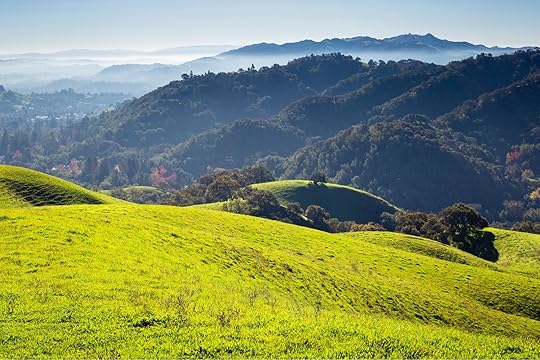
Photo: virgmos/Shutterstock
Distance from SF: 22 milesDrive time: 29 minutesWinery map: VisitConcordCA.comYou can have AVAs within larger AVAs, which is the case with the Lamorinda AVA — it’s a smaller wine-growing region within the larger San Francisco AVA. And yes, that does mean it’s close to the city. The Lamorinda AVA true San Francisco wine country, since you can visit its top wineries without needing a car (like a true SF local has a car, anyway).
From SF, take the BART to Lafayette; it’s about a 30-minute ride. While it doesn’t have the dozens upon dozens of wineries of a larger AVA, it has plenty to fill a day trip. In Lafayette, you’ll find Captain Vineyards, Thal Vineyards, and Deer Hill Vineyards. If you’re willing to take a short taxi or rideshare ride from Lafayette, you’ll find more another dozen or so wineries around Walnut Creek, Concord, and Avon, many of which are open for tastings.
Monterey County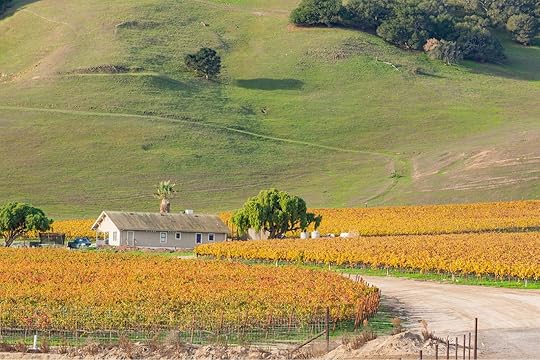
Photo: Kit Leong/Shutterstock
Distance from SF: 118 milesDrive time: 1 hour, 50 minsWinery map: MontereyWines.org (tasting room map)There’s no denying that the Napa AVA is huge — there are more than 400 wineries in Napa. But it’s not the only destination with enough vineyards to fill a dozen vacations. In Monterey, you’ll find more than 175 wineries and tasting rooms, making it one of the best San Francisco wine country options for a long weekend away from the city.
The Monterey Wine Grower’s Association already did the trip-planning work for guests with a perfect long weekend wine-tasting itinerary available online. The region is particularly notable for its chardonnays, which tend to have hints of orchard fruits like apples and pears, but aren’t overly sweet or fruity. But with the sheer number of wineries available, you’re bound to find something to love even if your palate gravitates towards rich cab francs.
Like in Napa, wine is a major industry around Monterey, and you’ll find operators running wine and cycle tours, wine and driving tours, and hotels with their own vineyards. But another great reason to head to Monterey’s wine county is that you don’t even have to set foot on a winery. If you’d rather get straight to the tasting, you can drop into one of 19 tasting rooms in Carmel-by-the-Sea, six in Monterey, or another 26 in Carmel County. And yes, they’re all conveniently mapped for you, so you won’t get lost even if you do go a bit hard on those chardonnays.
Marin County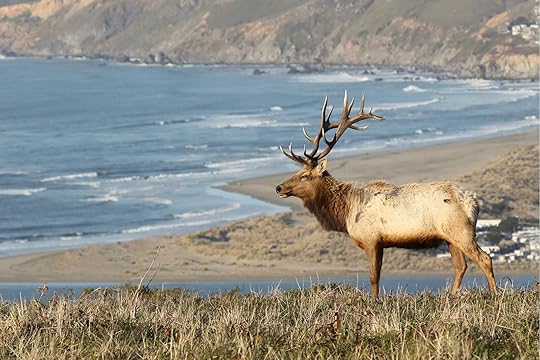
Photo: Tory Kallman/Shutterstock
Distance from SF: 22 milesDrive time: 40 minsWinery map: Yelp (and MarinWine.org)Getting to Napa requires a short drive to the east, and while it should take no more than an hour, traffic can sometimes make the trip drag on to nearly double that time. So instead, consider heading north, across the Golden Gate Bridge and up to Marin County, just across the water. There are about 17 wineries within a quick drive, and as you may expect if you’re familiar with the nearby (and famous) Anderson Valley, pinot noirs are prevalent in Marin.
Visiting San Francisco’s wine country to the north is a fairly easy drive. Once you cross the bridge, you’ll hit Sausalito, where you’ll find the Real Napa Tasting Room and JR. Story Winery. Stay on the 101 and you’ll h it wineries like Dancing Crow Vineyards and Backstage Winery. You’ll find Thackrey and Co. winery closer to Point Reyes, and you’ll have half a dozen more options closer to Petaluma, though at that point, you’ve moved into Sonoma County.
Marin makes a stunning and surprisingly small-town-feeling day trip from the Bay Area, especially if you add in an outdoorsy activity like a hike through the Point Reyes Elk Sanctuary.
San Luis Obispo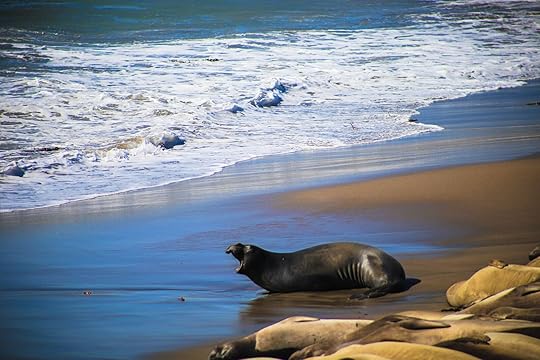
Photo: Suzie Dundas
Distance from SF: 231 milesDrive time: 3 hours, 30 minsWinery map: SloCoastWine.comSLO — technically called San Luis Obispo but pronounced “slow” — is a quirky surf town surrounded by quirky attractions. It’s the best San Francisco wine country weekend trip if you want to pair wine tasting with unique roadside stops like an elephant seal breeding ground or the over-the-top Hearst Castle. It’s also home to the Madonna Inn, with ridiculously thematic hotel rooms designed after cavemen, haciendas, and the Wild West.
For a truly unique wine weekend, add on a new winery activity like ziplining through the fields at Ancient Peaks Winery or cycling through the Edna Valley. And don’t worry: bike tours come with a support van in case you get too tired (or too tipsy) to keep biking. Most of SLO’s wineries are around the Edna Valley, though there are several tasting rooms in San Luis Obispo proper and another handful near San Simeon. The latter is a great place to stop after a tour of Hearst Castle, which also has its own winery. It’s inland, but the tasting room is just across the street from Hearst Castle along Highway 1.
Wine country around Mendocino and Philo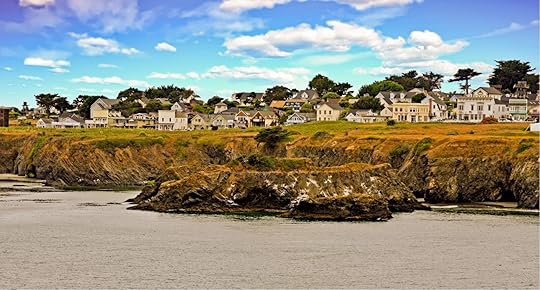
Photo: Thomas Barrat
Distance from SF: 121 milesDrive time: 2 hours, 20 minsWinery map: MendoWine.comFor a long weekend away from the city, head north to Mendocino. The actual town is a surprisingly small and charming village surrounded by fields overlooking the insanely beautiful cliffs Northern California is famous for. The Mendocino AVA is part of the much larger North Coast AVA, which also includes parts of several different counties, including Solano and Sonoma. There’s a lot of shade, shadow, and fog off the coast, so the region produces excellent medium-bodied reds, like syrah and pinot noirs (with a ton of variety within each).
One of the best reasons to head to Mendo for a wine weekend is the scenery. Some of the tallest trees in California are near Mendocino, and Montgomery Woods State Natural Reserve has redwoods more than 300 feet tall. Also near Mendocino are other fun activities, like the Skunk Train railway bikes through the redwoods and great mountain biking through the redwoods in Jackson State Demonstration Forest.
And when it comes to wine tasting, you have options, especially near the town of Philo. Lula Cellars is a very low-key outdoor tasting room where you’ll sit at barrel tables while tasting pinot noirs, likely with a few dogs lounging in the sun nearby. And Bonterra makes organic, climate-neutral wines — it’s the first in the world to do the latter. But Route 128 seems to have a winery every few miles once you get north of Santa Rosa, so you can pretty much pull over at whatever sign looks good and stop in for a tasting.
Apple Hill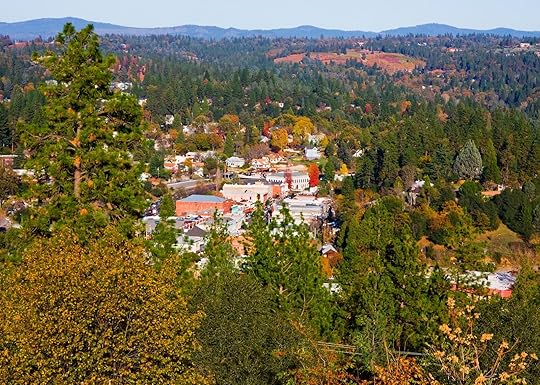
Photo: Andrew Zarivny/Shutterstock
Distance from SF: 133 milesDrive time: 2 hoursWinery map: AppleHill.comMost skiers in the Bay Area are no strangers to making the roughly three-hour drive to Lake Tahoe in the winter, but if you head in the same direction after the snow melts, you’ll reach Apple Hill in just about two hours. The rural wine region is in the foothills of the Sierra Nevada, just outside Placerville. It’s home to about 10 wineries and cideries, plus 20 ranches and farms, some of which are cute family farms that also happen to sell wine.
For a tasting and a picnic, stop by Lava Cap Winery, where full tastings are only $15. They also sell boxed cracker and cheese combos and have a large deck overlooking their vines. Rainbow Orchards is the place to get one of the apple cider donuts the region is famous for come fall, and Fenton Herriott Vineyards makes a great stop if you think wine and bocce ball is a perfect pairing.
Apple Hill will get a bit crowded on Saturdays in the fall during harvest season, but overall, it’s one of the least-crowded wine regions near San Francisco and one of the most affordable. Tastings of four or five wines are usually no more than $10 or $15, and many wineries wave the fees if you buy a bottle. It’s also casual — you’ll be walking across farms, so leave the high heels and fancy sundresses for Napa. It’s a low-key place.  .
.
More like thisWineThe Classic Wineries That Put Napa on the Map Are Still Must-Visits
Watch: What It’s Like To Dine at the Most Expensive Restaurant in the World

When traveling the world, there are different levels of dining, from street food to five-star luxury. Some restaurants are setting themselves apart from the luxury market by creating full-on experiences rather than just a place to eat — for a price.
Case in point: Sublimotion, which is the most expensive restaurant in the world. The 20-course tasting menu will run you close to $2000 per person. Since the restaurant opened at Ibiza’s Hard Rock Hotel in 2014, the restaurant has kept busy. For the winter and early spring, the restaurant created a pop-up location at the Mandarin Oriental Jumeira in Dubai. The TikTok account FoodWTF (which stands for Food Worth Traveling For) posted a video documenting the experience.
@foodwtf $2000 immersive dining experience at#Sublimotion in #Dubai #UAE
@user4040771366930 #uniquerestaurant #foodtiktok ♬ Originalton – Chrissy
Sublimotion describes itself as an exclusive and innovative gastronomic performance for 12 diners per night who sit at one large table. Sublimotion is the first dining experience that incorporates audio and visual experiences with performances that are curated to be paired with innovative culinary treats. And while some commenters on the TikTok question if the most expensive restaurant in the world is really worth it, the evening is described as futuristic, avant guarde, and unforgettable for its choreographed service. The head chef and founder Paco Roncero works with a team of 25 people to put it together each night. Guests even receive virtual reality headsets during the meal.
Sublimotion is leaving Dubai on May 4, but don’t worry. If you have $2000 to spend, you can catch the immersive dining experience once it returns to its home in Ibiza for the summer season. 
Guide to the Canadian Tulip Festival

This May, over a million tulips will envelop Canada’s capital city of Ottawa. It’s a gorgeous tradition that traces its origins to an exiled princess, an industry titan, and a world-famous photographer but for locals, it’s simply our favorite time of year. The Canadian Tulip Festival is celebrating its 70th anniversary between May 13 and 23, 2022, and has the distinction of being the largest event of its kind in the world. Here’s how it started and what visitors can expect during this special year.
Nearly all Ottawa residents credit the tulip tradition to the Dutch royal family and they’re not wrong — for the most part. Canada played host to the exiled Dutch heir, Princess Juliana, during World War II. The princess was a firm favorite among her Ottawa neighbors, insisting she be treated like any other woman whose spouse was fighting in Europe. However, the birth of her third daughter, Princess Margriet, required some extraordinary planning. The maternity ward of Ottawa’s Civic Hospital was declared extraterritorial so the newborn did not lose her place in the Dutch line of succession. Her birth on January 19, 1943, was a rare bright spot in a weary world. In 1945, Canada received a gift of 100,000 tulip bulbs from the Netherlands, a thank you for sheltering the royal family and for the pivotal role Canadians played in liberating the Netherlands during the war. Princess Juliana herself sent an additional 20,500 bulbs the following year and the gift-giving tradition has carried on every year ever since.

Photo: DD Images/Shutterstock
However, the Dutch shipment in 1945 was not Ottawa’s first gift of tulips. Richard Seymour Cobley, a British titan of the commercial flower industry, donated 83,000 tulip bulbs between 1941 and 1943 to thank Canadians for their ongoing war efforts. Between his generosity and the gratitude of the Dutch, Ottawa was soon known for its jaunty blooms. World-renowned photographer and Ottawa resident Malak Karsh took the tulips as his muse and it was at his suggestion that the Canadian Tulip Festival launched in 1953.
Over the past 70 years, the Canadian Tulip Festival has grown into a legendary event. Some of the biggest names in music, including Alanis Morissette, have appeared on the festival’s concert stage. Renowned thought leaders like Salmon Rushdie and Jared Diamond have presented at symposiums. And important dignitaries, including President John F. Kennedy and First Lady Jacqueline Kennedy who visited Ottawa during the 1961 tulip season, attended over the years. But since 2019, the festival has had a new focus. Under the leadership of executive director Jo Riding, the target is now to “re-root” the event back to its origins: heritage and horticulture.

Photo: Ottawa Tourism
In 2022, that means commemorating local residents who died during the campaign to liberate the Netherlands. A nightly walking tour called “Ghosts of the Glebe” will bring visitors through Ottawa’s Glebe neighborhood, sharing the stories of young men who died while in service. Riding says: “It’s really important that we continue the story forward so that new generations don’t forget. And a lot of people, even locals… they don’t know the story. So it’s really important for us to continue that mission of commemorating and celebrating our soldiers and they did so much in the liberation of the Netherlands.”
The tours are one of many evening activities. In Commissioners Park, home to about one-third of Ottawa’s tulips, select flower beds will be illuminated at night for the first time. Guests will also enjoy open-air screenings of Canadian Film Board movies come evening. However, the real excitement is taking place just a few feet away at the Dow’s Lake Boardwalk.
16 special planters have been placed along the boardwalk and illuminated with black lights in a unique artistic arrangement. This display is intended to showcase the flowers through the eyes of pollinators. Riding says: “Bees and butterflies and all of those guys, they see in the UV spectrum. So what’s amazing is, to us, we just get itchy and sneezy, but to them, they can see the pollen going everywhere.” She says that pale bulbs, including shades of white, cream, and light pink, were specifically selected for how well they present under the black lights and it promises to be unlike any other tulip beds.
Whether visitors are exploring by day or night, there are three special tulip spots that should be on everyone’s list for the Canadian Tulip Festival. The first is at Commissioners Park itself, at the Queen Juliana gift bed. It’s here that the bulk of the tulips donated annually by the Netherlands are planted and it’s a wonderful opportunity to reflect on the powerful friendship between the two countries.
The second is at the Civic Hospital, just a short distance away. The small bed here also contains tulips which are part of the annual donation. In fact, a stipulation of Princess Juliana’s original 1946 gift was that a tulip bed be planted at the hospital.

Photo: DD Images/Shutterstock
And finally, it’s well worth going downtown and not just to see the tulips which grace Parliament Hill and nearby government buildings such as Ottawa City Hall, the National War Memorial, and more. Your destination is the pretty flower bed at St. Andrew’s Presbyterian Church. It was here that Princess Margriet was christened. The church receives 100 bulbs from the Dutch embassy every year to this day. Elizabeth Phillipson, an Elder of St. Andrew’s and a volunteer archivist, says: “We open our doors to visitors and tourists all summer, with a few of us as guides, and when we tell the story of Princess Margriet, so many have never heard of it, or the tulips.” Not many people in Ottawa know about the history of this flower bed so you’ll definitely be among the festival’s best-connected visitors if you go.
Where to see the blooms in Ottawa during the Canadian Tulip Festival:Commissioners Park: Preston Street and, Queen Elizabeth Driveway, Ottawa, ON K1S 4N7, CanadaDow’s Lake Boardwalk: 1001 Queen Elizabeth Driveway, Ottawa, ON K1S 5K7, CanadaThe Ottawa Civic Hospital: 1053 Carling Ave, Ottawa, ON K1Y 4E9, CanadaParliament Hill: Wellington St, Ottawa, ON K1A 0A9, CanadaSt. Andrew’s Presbyterian Church: 82 Kent St, Ottawa, ON K1P 5N9, CanadaMuseum of History: 100 Laurier St, Gatineau, Quebec K1A 0M8, CanadaOttawa City Hall: 110 Laurier Ave W, Ottawa, ON K1P 1J1, CanadaThe National War Memorial: Wellington St, Ottawa, ON K1P 5A4, CanadaConfederation Park: Elgin St, Ottawa, ON K1P 5J2, CanadaThe grounds of the Supreme Court of Canada:301 Wellington St, Ottawa, ON K1A 0J1, CanadaTo learn more about the Canadian Tulip Festival, visit their website. 
Looking for a Honolulu Airbnb Away From Resorts? You’re Required To Stay 90 Days or More

If you were planning on saving some money on your month-long trip to Honolulu by staying in a well-priced Airbnb, you’re out of luck. In an attempt to further discourage short-term rentals, the local government recently passed a law that bans booking short-term rentals like Airbnb for less than 90 days. Previously, the rule was 30 days.
“Short-term rentals are disruptive to the character and fabric of our residential neighborhoods; they are inconsistent with the land uses that are intended for our residential zoned areas and increase the price of housing for Oahu’s resident population by removing housing stock from the for-sale and long-term rental markets,” the bill states. “The City Council finds that any economic benefits of opening up our residential areas to tourism are far outweighed by the negative impacts to our neighborhoods and local residents.”
The ban will come into effect beginning October 23. There is one caveat: It doesn’t apply to rentals in hotspot resort areas like Ko Olina, Turtle Bay, and parts of Waikiki. Honolulu isn’t the first place in the country that’s turned on short-term rentals. Airbnb crackdowns have been considered as early as 2016 in cities like Chicago and Los Angeles because short-term rentals can raise prices and limit housing options for residents.
“This is about protecting our place. First and foremost, this is about getting our residential neighborhoods back. Our neighborhoods have clearly been disrupted by the thousands of vacation rentals that have operated outside of the designated resort areas,” Honolulu mayor Rick Blangiardi said in a statement on April 26. “This is a form of managing tourism, but it’s also about getting housing back on the market and protecting the natural resources on O’ahu for decades to come.”
Of course, if you can make a 90-day or more trip to Hawaii work, there’s no way it isn’t worth it. 
The 10 Most LGBTQ-Friendly Cities in Europe

There’s a wide range of legal regulations, as well as social standards, across Europe when it comes to LGBTQ+ rights. Countries such as Sweden claim more Pride festivals per capita than anywhere else in the world. Many parts of Eastern Europe, on the other hand, sit very much on the wrong side of history.
Although looking at a nation’s human rights index is a pretty reliable way of gauging whether LGBTQ+ visitors will feel safe and welcome, there are cities where communities have come together to build pockets of security. These spots in Europe are a mix of under-the-radar queer destinations and popular ones like Berlin and London.
These are the best LGBTQ+ friendly cities in Europe, with suggestions on the best nightlife spots, where to grab a bite to eat, and what to do.
Barcelona, Spain
Photo: Luciano Mortula – LGM/Shutterstock
With a warm climate, Spanish tapas, clothing-optional beaches, a plethora of cultural offerings, and a well-established friendly community, Barcelona is a year-round LGBTQ+ destination.
Big annual events include Barcelona Gay Pride in June, Circuit Festival in August, and the International Gay and Lesbian Film Festival held in the fall.
You’ll find most of the city’s gay bars, restaurants, and shops in the Eixample district, with other cool spots also spread throughout the city.
Antinous, is a gay and lesbian bookstore in the Gothic quarter, selling comics, travel guides, DVDs, and more. ES Collection has some seriously sexy pieces of men’s underwear perfect for those fun nights out at the club where hook-ups may happen. And La Federica is one of the best LGBTQ+-friendly bars with a retro-modern decor, mean cocktails, and an excellent tapas spread — not to mention the cute, bearded bar staff behind the counter.
Plus, Barcelona is only half an hour from Spain’s most celebrated gay city, Sitges.
Berlin, Germany
Photo: frantic00/Shutterstock
Without question, Berlin is among the most LGBTQ+-friendly cities in all of Europe. Historically, the gay center of Berlin was around Nollendorfplatz in Schöneberg, but hotspots are now also found throughout Kreuzberg and Neukölln. The city’s annual gay Pride holiday, Christopher Street Day, brings half a million visitors and features a parade and parties throughout Berlin for almost two weeks. The lesser-known and alternative Kreuzberg Pride, which takes place on the same day, celebrates lesbian, gay, bisexual, and transgendered people.
Epic parties also take place regularly. Gegen at Kit Kat (held on the first Friday of every other month), and SchwuZ which hosts “Madonnamania” and “London Calling” nights are worth putting on the calendar.
Bars to hit up include the smoky Möbel Olfe with a giant “Homo Bar” sign posted outside, Betty F***, Monster Ronson’s, and Facciola, a lesbian-owned and operated wine bar in Kreuzberg, popular for its pop-up Cabaret Opera nights.
Also worth visiting is the monument to the LGBTQ+ victims of the Holocaust and the world’s first queer museum, the Schwules Museum.
Manchester, England
Photo: trabantos/Shutterstock
Manchester, the UK’s second-largest city, is known for being a gay-friendly destination, especially after the popular TV series Queer as Folk was filmed there in the 90s. The Gay Village, in and around Canal Street, has back-to-back bars, clubs, and other gay-owned businesses.
We recommend relaxing in the afternoon at the Richmond Tea Rooms for an Alice in Wonderland-inspired high-tea experience. The male-only, Victorian styled bar, The Eagle, is also popular and is set in a cool basement of an industrial building. And if clubbing is your thing, you must dance the night away at G-A-Y, a nightclub with cheap drinks and a seriously fun (and often young) crowd.
Manchester also hosts several LGBTQ+ events throughout the year, including Manchester Pride (the biggest Pride celebration in the country) and the Sparkle festival.
But it’s not all fun and parties in Manchester, you can also learn about the city’s gay history by visiting Sackville Gardens, a park containing three different historical monuments: the Alan Turing Memorial, the Transgender Remembrance Memorial, and the Beacon of Hope, a sculpture paying tribute to those affected by AIDS. Another option is to take a gay heritage tour with Manchester Guided Tours.
Rome, Italy
Photo: Catarina Belova/Shutterstock
Rome isn’t a well-known LGBTQ+-friendly destination, but the city’s gay scene is one of the most underrated in Europe.
Rome’s unofficial “gay street” has plenty of bars and clubs, like the aptly named Coming Out. And for three months over summer, a section of a city park is transformed into the Gay Village, a massive party with two open-air dance floors, bars, live music, and even food trucks. Then there’s Glamda, a summer gay (and straight-friendly) party held at an outdoor club with loud techno music, neon lights, and friendly locals. While the drinks are on the expensive side, the music is great, and the crowd is enthusiastic. More fun can be found at the regular Friday night Muccassassina event at Qube Disco, a long-running gay dance party that’s become so popular that people willingly wait outside in a queue for hours. The club has three different dance areas, playing house, techno, and pop music.
But, again, Rome’s gay-friendly atmosphere goes further than just the nightlife, with tons of opportunities for romance for LGBTQ+ couples. Opt for a Scooteroma tour on the back of a Vespa with a Rome local, or an Eating Italy food tour through Rome’s foodie neighborhoods.
Prague, Czech Republic
Photo: Ajan Alen/Shutterstock
Like Rome, Prague is another European city that rarely shows up on the LGBTQ+ radar. Prague is relatively new to the scene, celebrating their first Pride in 2011. While the Czech Republic still has a long way to go in terms of LGBTQ+ rights, there’s a lot of action to be had.
Check out Club Termix, arguably Prague’s most popular gay bar and club, offering drinks on the cheap, a good crowd, and DJs spinning. Expect groups of sweaty boys and their girlfriends, dancing on tables and spilling drinks. Near to Club Termix is Saints Bar, a small bar that regularly holds parties and other nightlife events. Another gay-friendly venue is Friends Club in Prague’s historic Old Town where anyone and everyone are welcome.
To recover from those long nights out, hang out at friendly Café Café for a hearty brunch and a huge cup of coffee. And instead of staying in a hotel situated in one of Prague’s most touristy areas, consider renting an apartment in the city’s newest gayborhood of Žižkov.
Amsterdam, Netherlands
Photo: Olena Znak/Shutterstock
Amsterdam is hands down one of Europe’s best cities for LGBTQ+ travelers.
The annual Pride is a floating celebration on water, with boats instead of typical parade floats coasting down the Amstel and along the city’s scenic canals, like the Prinsengracht. Milkshake, a summer queer music festival with no dress code, welcomes everyone to come and enjoy different music on one of their nine stages.
Most of the city’s gay nightlife is on a single street in the center of Amsterdam, the Reguliersdwarsstraat. There are more sex shops and gay bars dotted throughout the Red Light District — just look for rainbow flags. One of the best gay places to visit is Cafe t’Mandje, the oldest gay bar in Amsterdam. It opened its doors in 1927 and you’ll often find crowds spilling out onto the street from its kitschy interior. One of the best sex clubs is Club Church which holds themed parties. It hosts a tamer crowd every Thursday night with featured drag shows.
Also not to be missed is the Homomonment, a “living monument” to homosexuals who’ve been oppressed around the world. You can also find out more about Amsterdam’s LGBTQ+ history at the Pink Point information stand, located close to the Homomonument.
Stockholm, Sweden
Photo: Oleksiy Mark/Shutterstock
Stockholm has been a longtime favorite of queer travelers around the world. Aside from its great mixture of design, culture, shopping, and natural beauty, Stockholm is the perfect LGBTQ+ destination.
Their annual Pride celebration features not only the usual parade but a Pride House where conferences and seminars are held in the week leading up to the parade and a large, open-air Pride Park with concerts, dance parties, shows and other events.
The boutique Berns Hotel is the city’s unofficial gay hotel. Within the hotel, there are two restaurants the Asiatiska and Berns Bistro and Bar, the basement club Audiio, and even a concert venue where Diana Ross and the Supremes once played.
If you can drag yourself away from the hotel, you can experience Stockholm’s gay nightlife in the downtown district. Stockholm’s coolest gay club is the underground King Kong club with DJs spinning in two jam-packed rooms. Expect both pop and schläger music in the back room and techno beats up front.
For food and drink, head to Mälarpaviljongen in the summer, a restaurant and bar spread over three floating docks. The owners are supportive of charity work at home and abroad, especially for LGBTQ+ individuals.
London, England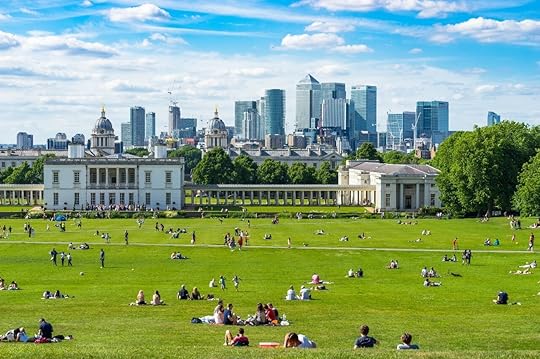
Photo: Pajor Pawel/Shutterstock
With London being one of the most multi-cultural cities in Europe, it’s also one of the most LGBTQ+-friendly, making the British capital an international top queer destination.
While Soho used to be the city’s main gay neighborhood, much of the nightlife has moved over to East London. Take, for example, Dalston Superstore, a gay bar and cafe that features art exhibitions and musical performances, as well as comfort food like burgers and Sloppy Joes. Also worth visiting is The Glory, a queer and gay “super-pub” which hosts film screenings, performance art, cabaret nights, and an affordable late-night disco.
Even if many of London’s gay pubs and clubs are now no longer in Soho, you’ll still find plenty of reasons to stay central, too. Soho has a large concentration of sex shops and LGBTQ+ bookstores. Try the newsstand on Old Compton Street for a vast variety of LGBTQ+ magazines. Soho and Central London have several other LGBTQ+-friendly attractions. The Photographers’ Gallery is a six-story building that hosts regular photo exhibitions including some with LGBTQ+ themes while the Twilight Soho Food Tour takes you on a historical walking tour through Soho exploring (and tasting) the neighborhood’s changing demographics. And countless theaters in Soho and Covent Garden areas put on musicals and award-winning performances — everything from Miss Saigon to Kinky Boots.
Paris, France
Photo: RossHelen/Shutterstock
Unsurprisingly, the City of Love is also one of the best gay friendly cities in Europe — especially for couples.
While France has had some turbulent years fighting for LGBTQ+ rights, the scene in Paris is still intact. The city’s gay neighborhood, near the Hotel de Ville metro in the Le Marais district, still houses some of Paris’ most famous gay nightlife. The streets of Le Marais (in particular: Rue Sainte-Croix de Bretonnerie) are lined with art galleries and small shops during the day, transforming into a nightlife hub after dark, with gay Parisians spilling out onto the sidewalk cafés.
Besides romantic walks along the Seine River, a stroll through the Left Bank (famously liberal and independent, with many international restaurants, cafés, and bookshops), or, of course, a kiss on top of the Eiffel Tower, the one other stop for an LGBTQ+ tour in Paris has to be the Père Lachaise Cemetery. That’s where you’ll find Oscar Wilde’s grave (now protected by plexiglass) covered in kisses by his many admirers. For a deeper dive into Europe’s most romantic city, local tour operator The Gay Locals offer both historical and nightlife-themed LGBTQ+ tours through Paris.
Dublin, Ireland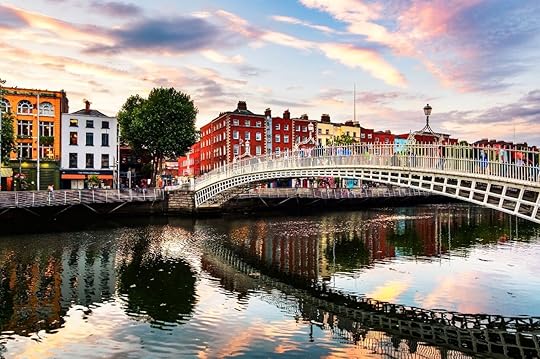
Photo: Madrugada Verde/Shutterstock
Ireland made waves in 2015 with its historic same-sex marriage equality, voted in by popular vote (the first in the world). But its capital city has been LGBTQ+-friendly for much longer.
Gay icon Oscar Wilde was born in Dublin and today there’s a colorful memorial statue inside Merrion Park, across from his former house. Continuing the Irish tradition for LGBTQ+ literature, Dublin hosts the International Gay Theatre Festival each May with edgy, heart-warming and independent performances.
For nightlife, The George is a mixed LGBTQ+ pub, crowded most nights of the week with drag performers taking the stage almost nightly amongst young groups of tourists and locals. The backyard smoking patio is a friendly place to meet others, or there’s always the dance floor.
Dublin Pride takes place each June and is often headlined by Ireland’s most famous drag queen, the toweringly tall Panti Bliss — who also owns her own gay bar just outside the Temple Bar district, aptly named PantiBar. Expect lots of bright colors and friendly, diverse crowds. 
Matador Network's Blog
- Matador Network's profile
- 6 followers



